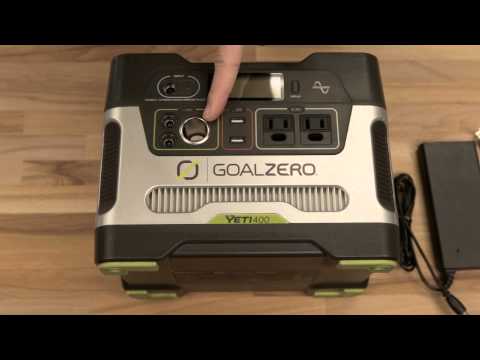WHAT'S IN THE BOX
Goal Zero Yeti 400 Portable Power Station
Wall Charger
USER GUIDE What Can The Yeti
What Can The Yeti  Specifications
Specifications  Video
Video  FAQ
FAQ 

